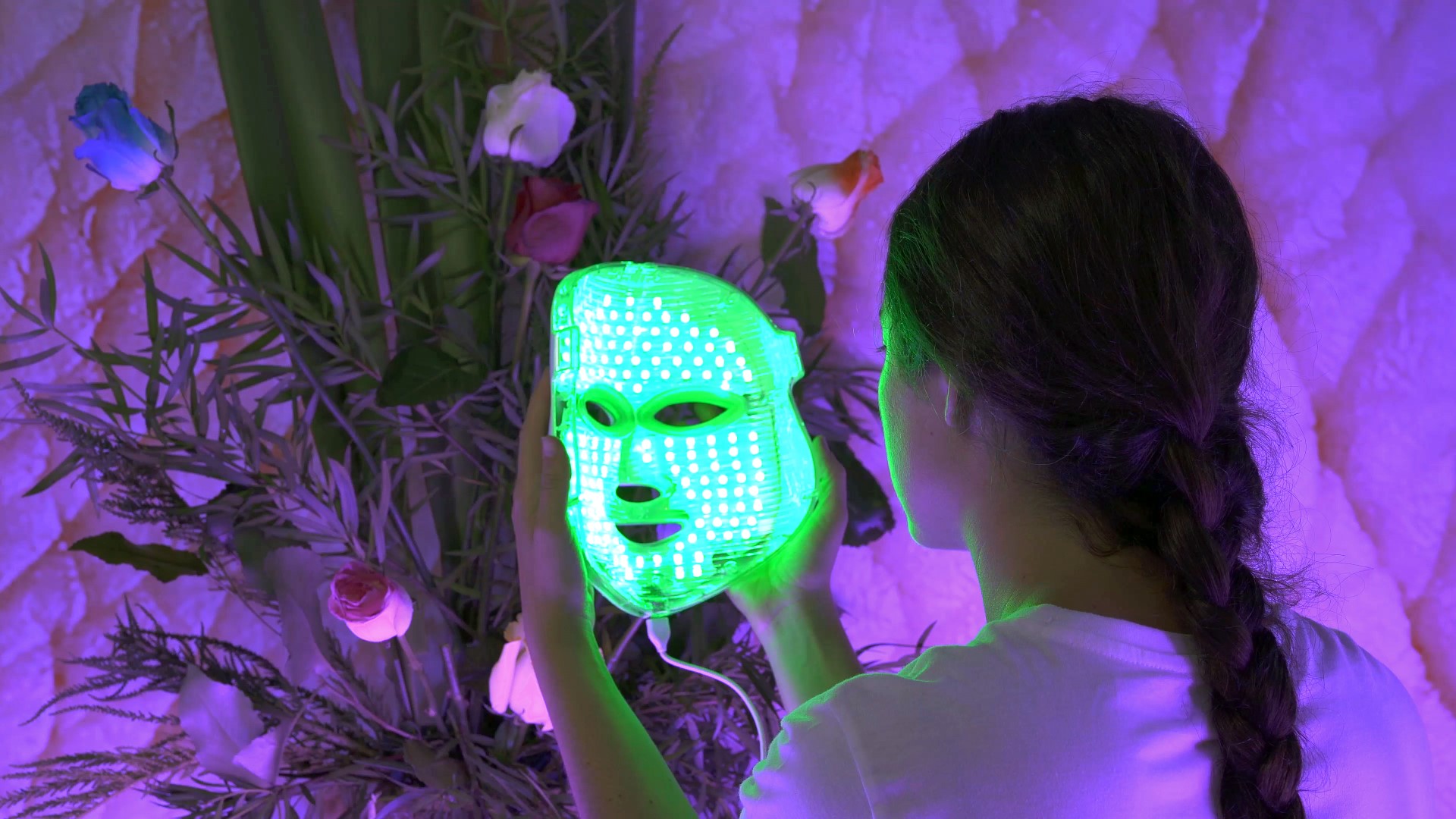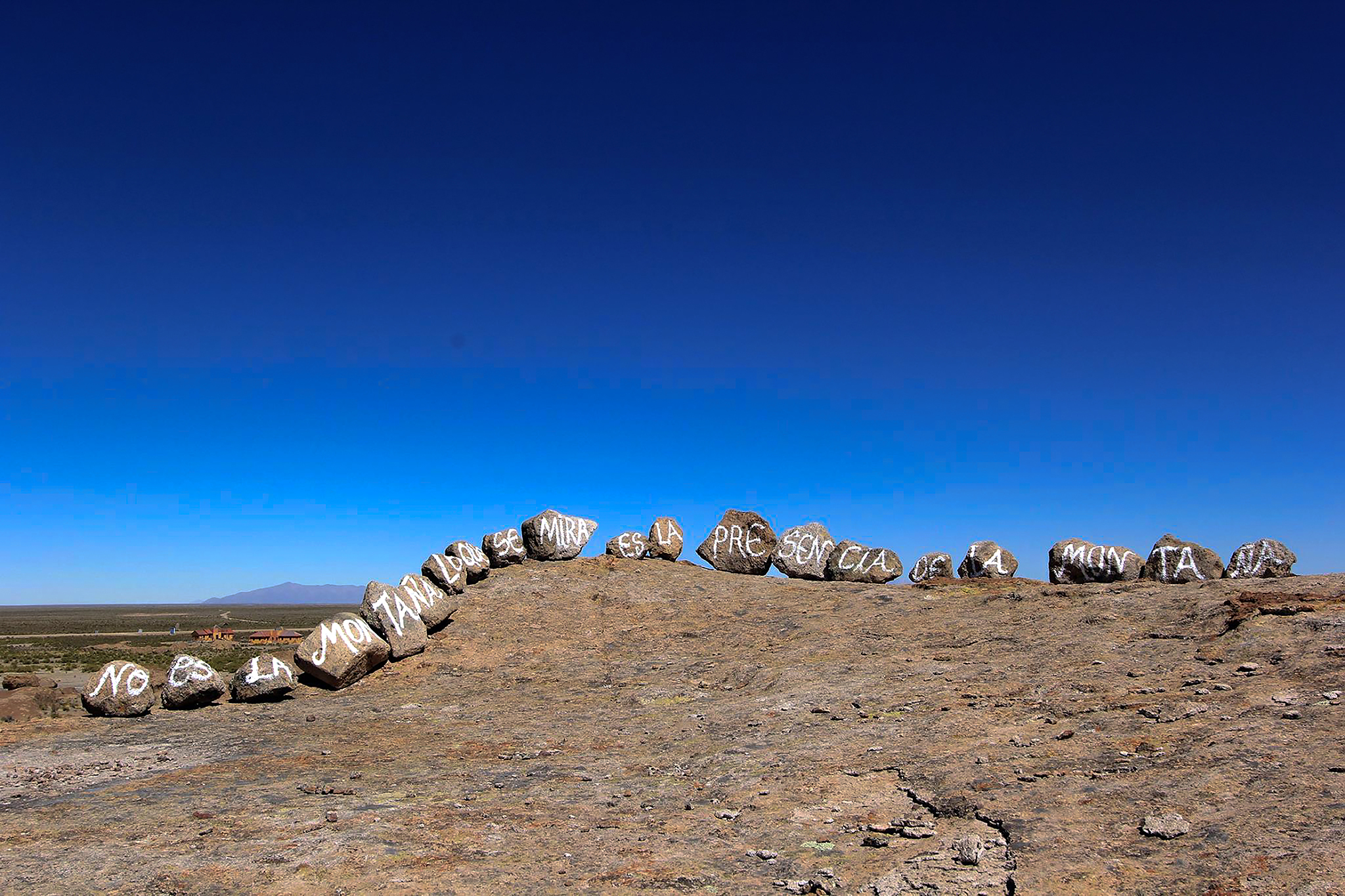Deforming into the Multiplicity of Cosmic Relations
The NOMASMETAFORAS collective, integrated by Clara Melniczuk and Julián Dupont, works in the fields of contemporary art and experimental thought between France and Colombia. Committed to the indigenous knowledge of the Cauca region in Colombia, their artistic practice is developed by activating spaces of listening and reflection that maintain a constant search to disarticulate Western anthropocentrism, allowing a multiple inhabitation beyond the human.
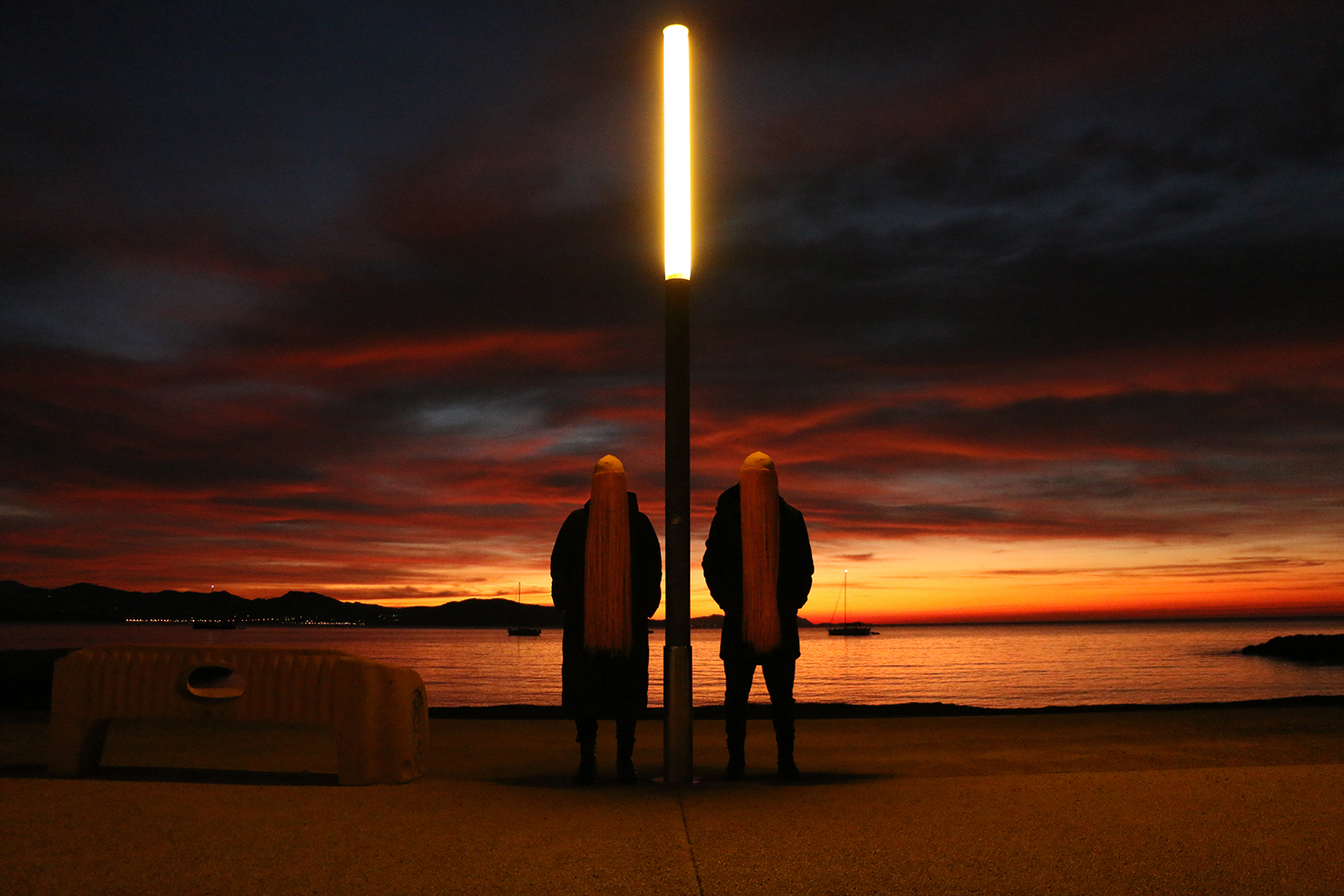
Education
Setup and Learning
NOMASMETAFORAS arose as an organic evolution of our affective relationship—as a question inherent to the plasticity of our living as a couple. The main impulse to begin was found in imagining zones of opacity between our practices in contemporary art and philosophy, confronting that something other than ourselves, an image that unravels beyond what we understand as 'limit' and ‘border.’
As a problem to be traversed, we shared the weariness to the need for an imperative framework; we shared the the fatigue resulting from the need to respond as identity, border or discipline, being categories still imposed by an objective resolution of the world, coming from a dialectic both Western and inherently eco-colonial,1 including our anthropocentric notion of 'aesthetics' and the modern constitution of the subject with which we had been educated. We knew that the articulation of our conversation opened up the possibility of resolving ourselves as an alliance, of resolving ourselves as a state of variation. In that critical horizon about ourselves as vulnerability, there’s an abandonment of what we had been to give way to the beginning of what we could be in terms of the plurality within us.
Since 2012, while living in Popayán, in what we now misnamed 'Colombia', every two weeks we met with elders Misael Tumbo and Luis Aureliano Yunda, traditional doctors of the Nasa community. The meetings took place in what they call 'harmonization practices', ritual gatherings to heal our bodies through relational forms such as conversation with the clouds, the appearance of thunders, or the chewing of coca leaves to get in sync with other ways of reaching language. In each of these encounters as radical politics, we were moved by the medicinal practice of envisioning as a cure; the mastery of the THE’ WALA (the Nasa traditional doctor) in letting your illness enter into him so that only then he can cure you in his body, to cure us together through ritual. In the face of this, linear time for our binary formulations as object-making minds, presented itself from another place to us in us; spiral time in a form unknown to us until then as a sign. The mountains began to answer the questions in our bodies.
The "we" that we had conceived in our construction of the Western subject was being cracked; the inherent need to make ourselves subjects was being deformed to the extent that we make of the other, and everything else, an object. This was not what happened in the conversation with the thunder in order to see them respond, nor was it what happened with the plants that respond between dreams to begin to heal.
How to articulate a question for ourselves when sameness as otherness in the formation of our processes of identity, inherently linked to a colonial extractivism, passes—as in any imposition of border, limit and nation-state—through the patriarchal racism that this construction structurally brings in its form?
The conversation with the traditional Nasa doctors led to the possibility of beginning to formulate questions in alliance: How could we articulate a question for shared pedagogies, when what we call 'art' has no word in the Nasa-Yuwe language? How to achieve an encounter between what we call 'philosophy' or 'sculpture' and what they call 'ritual of harmonization'? Where does the they end and the we begin as a conversation about a different way of resolving ourselves as subjects? How does ritual become everyday life up to vegetal otherness as pluriverses in relation? From this dynamic we were enabling territorial activations such as the participation in one of our exhibitions of the Indigenous Guard of the Indigenous Regional Council of Cauca in the spatial occupation of an installation presented in Popayán in 2018. It was from this place that we questioned ourselves together until we created a space for seminars from the Intercultural Indigenous Autonomous University of the Indigenous Regional Council of Cauca, which we initially called Las alianzas esquizo-chamánicas [The Schizo-Shamanic Alliances] where, through a grant from the ArTeC Research School of the University Paris-8 and the University Paris Nanterre; philosophy, contemporary art practices and traditional medicine started to explore, as conversation and confluence, a space which for the moment we think of as pedagogies of radical imagination.
In this way of establishing a relationship, we knew of a place as a resonance in ourselves where becoming a jaguar is not a metaphor, it is rather a medicinal practice, where entering into a relationship with the clouds does not pass through forms of abstraction as representation, a place to inhabit the worlds as the end of a world based on thinking of ourselves from Abya Yala. Then, the name of the collective emerged: NOMASMETAFORAS.
Our training in visual arts and philosophy was the starting point on which we elaborated moments of presentation, linking performative installations, pedagogical practices, performative counter-conferences, sculpture, writing, workshops as dreaming technologies, and other practices crossed by a deformation of our conceptual apparatus towards the to-be as cosmomorphic forms of relation.2
Teaching
We find more and more resonance in conceiving pedagogy as 'practices of care and emancipation'. In our experience, what opened the seminar The schizo-shamanic alliances, which took place in 2020, was the possibility of articulating 12 sessions of meetings -virtual for those at a distance and face-to-face for those in the territory-, bringing together dynamizers (what in the West we call 'professors'), thinkers, artists, traditional practitioners and students both from the context of the Intercultural Indigenous Autonomous University (UAIIN-CRIC), as well as master's and doctoral students in contemporary art practices at the School for Research in Art and Technology (EurArTeC). As the conversation developed, the richness of questioning the ways of "making and transmitting knowledge" opened an organic plasticity where the initial questions became spaces of encounter and reflection. In each session, we prepared a thematic constellation, finding conversation with the pedagogical structure of the UAIIN- CRIC, who proposed a dynamizer to formulate the articulation and then present it to the students. Thus, a space of encounter was created between rurality and city, between sculpture and ritual practices, philosophy and vegetal conversations, between Abya Yala and the variations that bring its force to the contemporary world.
At the end, we felt that the seminar had become a space to take care of ourselves, to think and be with the other in the thinking of the other; pedagogy as a practice of healing as Audre Lorde talks about. At the closing, we all felt that something significant had happened as a bond: we shared the feeling of an affective intimacy that had opened up among the participants. When we speak of care in pedagogy, we mean engaging with questions, issues, texts, works, and concepts from a space of vulnerability that a hierarchical and vertical type of education does not allow. Pedagogy as a practice of emancipation and care is that which manages to open the end of a world towards worlds in relation as a different dwelling.
From what we have resolved as ‘art,’ we can engage with knowledge and transmission in a way that intrinsically challenges the hierarchical nature of most academic spaces. Questioning the linear and extractivist relationship of how we know, challenging this kind of linear thinking, enables spaces of pedagogy as a non-extractivist practice, spaces of alliance and radical imagination.
Processes
Beginnings
The image of the world has a possibility less attached to representation, and instead, closer to an act of invocation: entering into a relationship with the plants instead of the botanical description of them. From this perspective, the forms of a project come as ideas in emergence; as the crystallized weave of a constellation that we inhabit. Many of our forms come from dreams, as well as from what we read, feel and write. In some ways, the beginning of a new project resembles attentive listening, a kind of 'wu-wei,' a wonderful concept used in Zen Buddhism to describe a non-violent volition, a sharp but gentle attention.
Let us explain with an example: at one point, we were thinking about the problem of thinking as an excessive act of measurement. As we went through the question we found that there was something inherent in thinking as we think that had a lot to do with colonial impositions regarding the relationship to land, and how that relationship to the agrarian intrinsically connected an active resonance between the 'modern' objects of the city, with the sources of extraction from which they came, as well as the construction of 'Latin American' identity with the lands of Abya Yala. We were interested in the link between the settler's house and the source from which the minerals that sustain it still come from. As we discussed the subject, a familiar image appeared: traveling between Cali and Popayán we spent hours on the road contemplating sugar cane crops. Thus emerged MONOCULTIVO, a looped video with the endless landscape of a single-crop horizon.
We are currently working on a sculpture and text project that unfolds from the dreamed forms linked to our house where we have coca and floripondio plants.
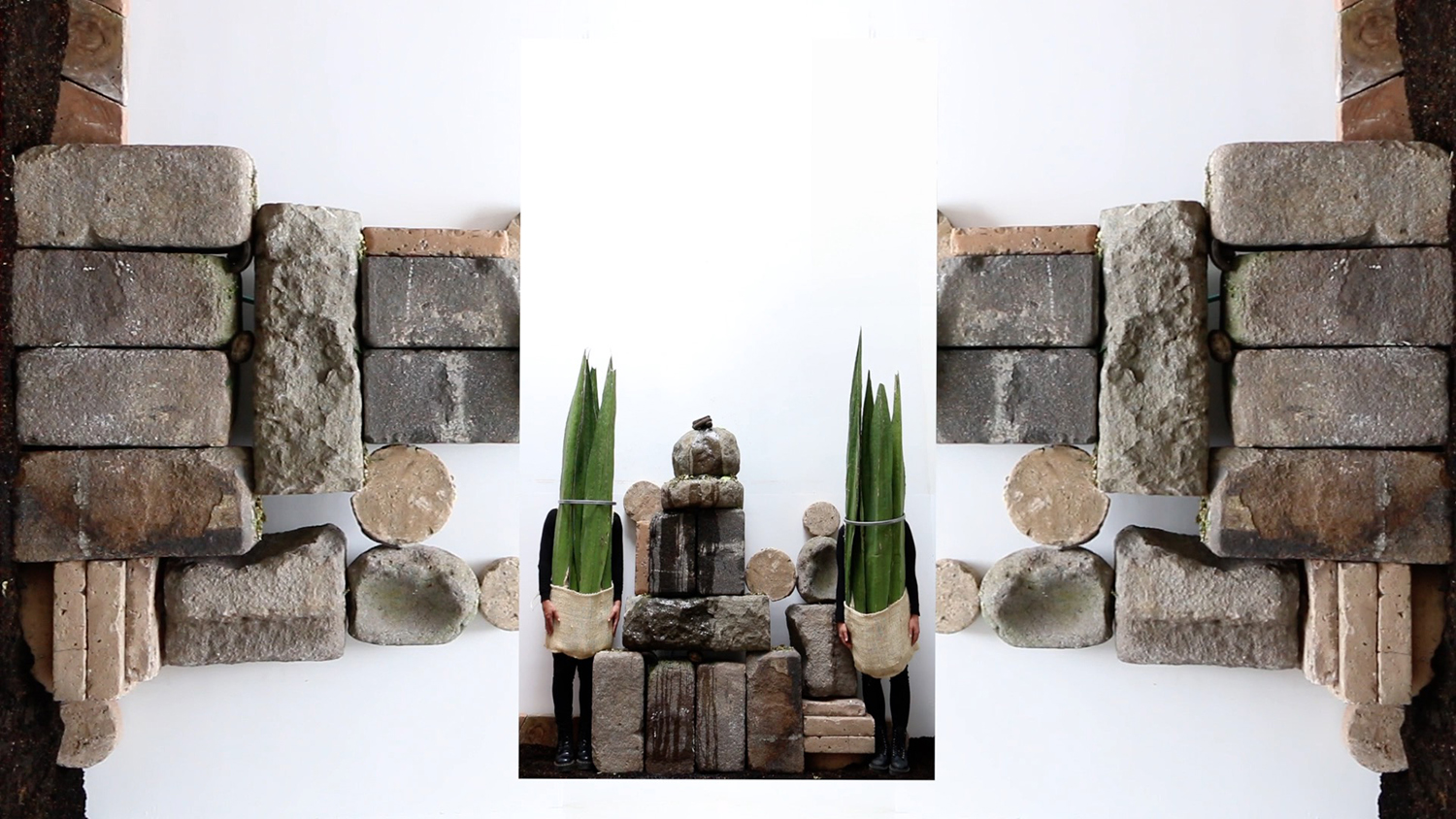
Questions
If there is a fundamental notion that runs through our practice, it is that of 'equivocity.' We constellate 'equivocity' as the conjunction of vulnerabilities in relation, as that resonance and conversation between multiplicities that does not become an affirmation as a colonizing territorialization. ‘Equivocity' is the sharing of the way in which we do not understand ourselves as relation, a kind of walking in question, as the Zapatistas would say, staying in the problem in the way Donna Haraway talks about it, to work with opacities, rather than trying to eliminate them. That sometimes means being in an uncomfortable position, or also putting oneself at risk. Working with problems also means giving up the need to solve, to find solutions. In fact, we strive not to look for solutions, but rather we aspire to inhabit, to embody as sincerely as possible the questions that traverse us.
We could affirm that, ultimately, all sources of knowledge are intuitive, even when they strive to pretend not to be. Violence lies under the claims to truths and universals.
It is a revealing paradox; the concept of rationality was once an intuition. It seems important to us, vital in fact, to recover that intuition and vulnerability, not by opposing it to rationality, but by bringing it forth, especially in spaces where it no longer seems to dwell (which is where it is most needed). The city is less alive than the mountain.
Strategies
As a methodology we adopted the challenge of making Amerindian Perspectivism a methodological approach. Amerindian Perspectivism is a conceptual theorization of Brazilian anthropologist Eduardo Viveiros de Castro present in his book Metafísicas caníbales: Líneas de antropología postestructural [Cannibal Metaphysics: For a Post-structural Anthropology]. According to it, what we share with non-human life forms is not animality but a form of humanity when everything becomes human. The moment everything becomes human, the human we know becomes something else. That is the humanity of the myth, the one where the cloud, the jaguar and the human are persons.
To that extent, Amerindian Perspectivism is not based on interpretations but on perspectives in relation. Turning into a jaguar is the mastery of becoming for the traditional doctors of the Colombian Putumayo; it is the mastery of being perspective, the capacity to inhabit as transformation. Far from giving place to difference as that which differs between one interpretation and another—which gives rise to the nefarious multiculturalism as emancipatory capture—difference is understood as that which crosses us, and to that extent, a perspective is not a point of view that differs from the other but a body that as a difference, is already a perspective. Such operation as relation doesn’t allow as a horizon a development of more and more viewpoints built from a disciplinary objectivity, but a growing questioning of the development of our disciplines in order to turn them into something more than themselves—less an academy of researchers and more an academy of traditional doctors.
In our practice, Abya Yala's perspectivism as a methodology is part of what Viveiros de Castro calls the 'ontological turn,' where in the practice of our disciplines we apply a deformation of our Western conceptual apparatus to let it become "something more than itself." To that extent, just as we are presenting our work from a frame as a spatial-performative experience, there is something else that happens in our workshops, counter-conferences, sculptures or installations: the possibility of unfolding the humanity of myth as a constellation, thus revealing the conceptual formation of the Western dialectic as objectification of everything that is not "I"; by opening as a possibility of emancipation the practices of radical imagination, linked to a political project whose matrix seeks to inhabit the worlds from Abya Yala, it seeks an inhabiting as cosmo-morphic plasticity in the pluriverses to come. Recovering the earth also implies recovering ourselves.
Procedures
How to be in resonance with plant and mineral beings up to a different resolution of what we conceive as ‘artificiality’? How to be in resonance with the non-human in us, as a possibility of emancipation up to a resolution of living artificiality? Part of the direction that currently mobilizes us is the work with the earth and plants to enter into relationship with the space of dreaming, what we have called "Dreaming technologies.”
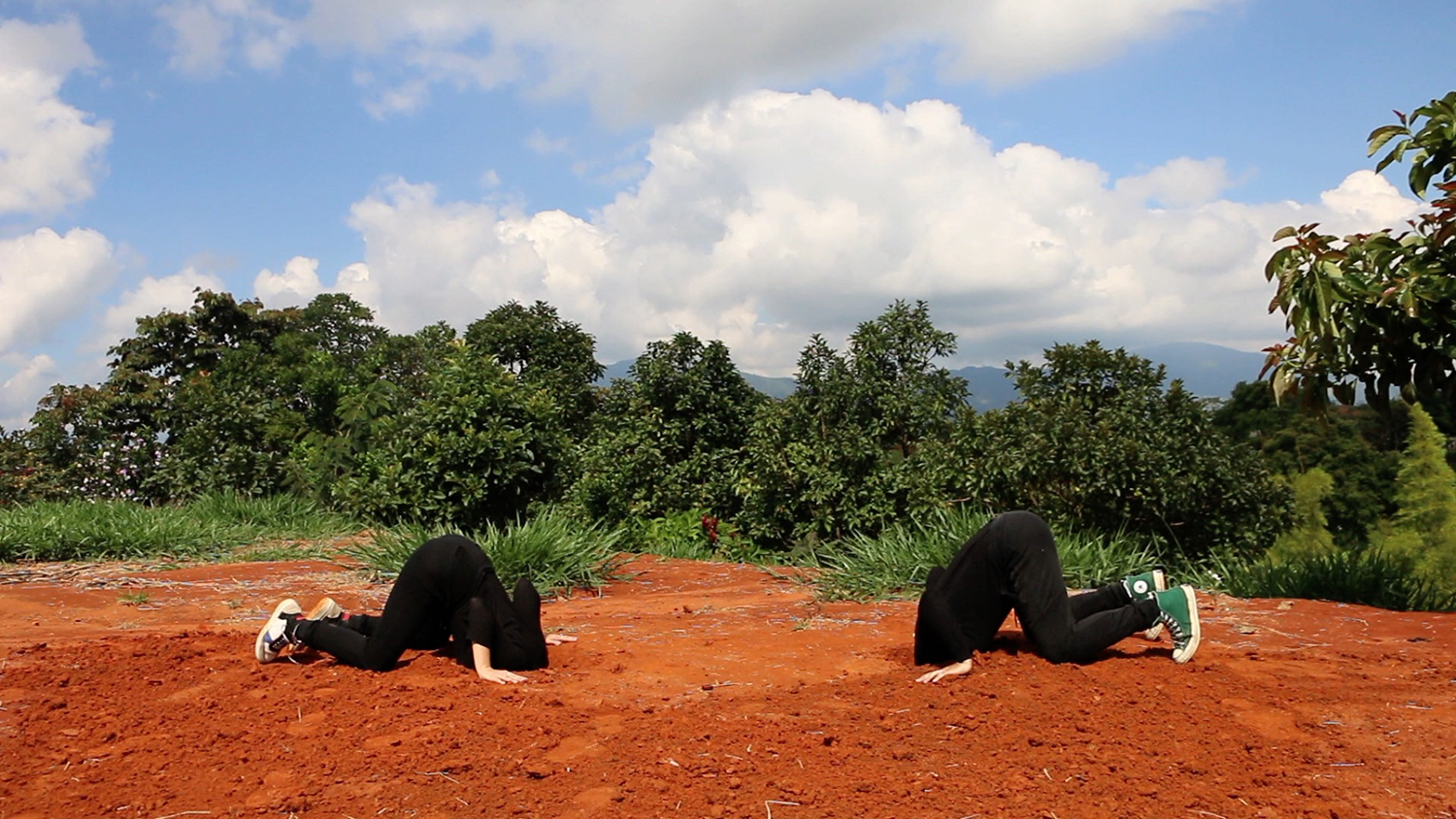

Dialogues
Currently, the constant conversation and articulation that we weave since our beginning as NOMASMETAFORAS, has been with the pedagogical project of the Intercultural Indigenous Autonomous University of the Indigenous Regional Council of Cauca, and the Laboratory of Art and Technology ArTeC of the University Paris8 and the University Paris-Nanterre. What emerges from this relationship is a constant conversation through seminars and practices of pedagogies of radical imagination, and likewise, a production of works and theoretical works that as spaces of presentation in city contexts, we have integrated into a work that makes sense to the extent that these resonate as processes in relation.
Projects
In Progress
We finished recently our six-month artistic residency at Cité International des Arts in Paris, where we carried out a project entitled Soñando el Pluriverso [Dreaming the Pluriverse], composed of four performative counter-conferences, presented at La Maison de L'Amerique Latine, and another one at La Commune, invited by THANKSFORNOTHING. Soñando el Pluriverso was an interweaving of theory, sculpture, installation, and performativity that presents a body of work linking these forms as states of variation towards an immersive experience as decolonial everydayness.
As a sculptural practice, Julian works on a body of work entitled Potosí, where he articulates the relationship of two technologies: annatto seeds and magnetic levitation devices. Clara offers a critique of Western ecologism as a detached version of coloniality, associating the relationships between the construction of our contemporary eco-solutions as extensions of mineral extractivism. It is worth mentioning that the symbiosis of our practices increasingly blurs the boundary between our individual projects.
For October 2022, we are preparing the visit of a delegation from the Intercultural Indigenous Autonomous University of the Indigenous Regional Council of Cauca to Paris, where the organization will present its pedagogical-political project and we’ll be presenting the work of the NOMASMETAFORAS collective through a workshop to students and residents of the Cité International des Arts, in relation to practices of ancestral medicines of the Cauca territory, and a performative installation of our recent practice.
In Retrospect
Within the framework of the artistic residency at Cité International des Arts, generating forms of communication through practices with plants was an interesting challenge for us being in Paris while establishing contact and communication with traditional doctors in the Indigenous territory from Colombia. This implied the search for medicinal plants in a context strange to these practices as well as the construction of sculptural devices to establish links with what was opened by these epistemologies, besides the possibility of contextualizing these questions, not within the exoticist distance of multicultural relativism, rather within the difficulty of construction in a society traversed by a denial of its colonial present as an inherent formation of its identity.
Given the impossibility of exhibiting sculptural pieces with coca leaves in a European context, due to the prohibition of traveling with them, it was extremely interesting to find ways to present this problem in the absence of the plant. To that extent, for us, the links between learning and the development of a body of work go through a moment of translation of these epistemologies in ourselves and also through a variation of ourselves towards generating our own relationship with what modernity has reduced to the notion of 'nature.'
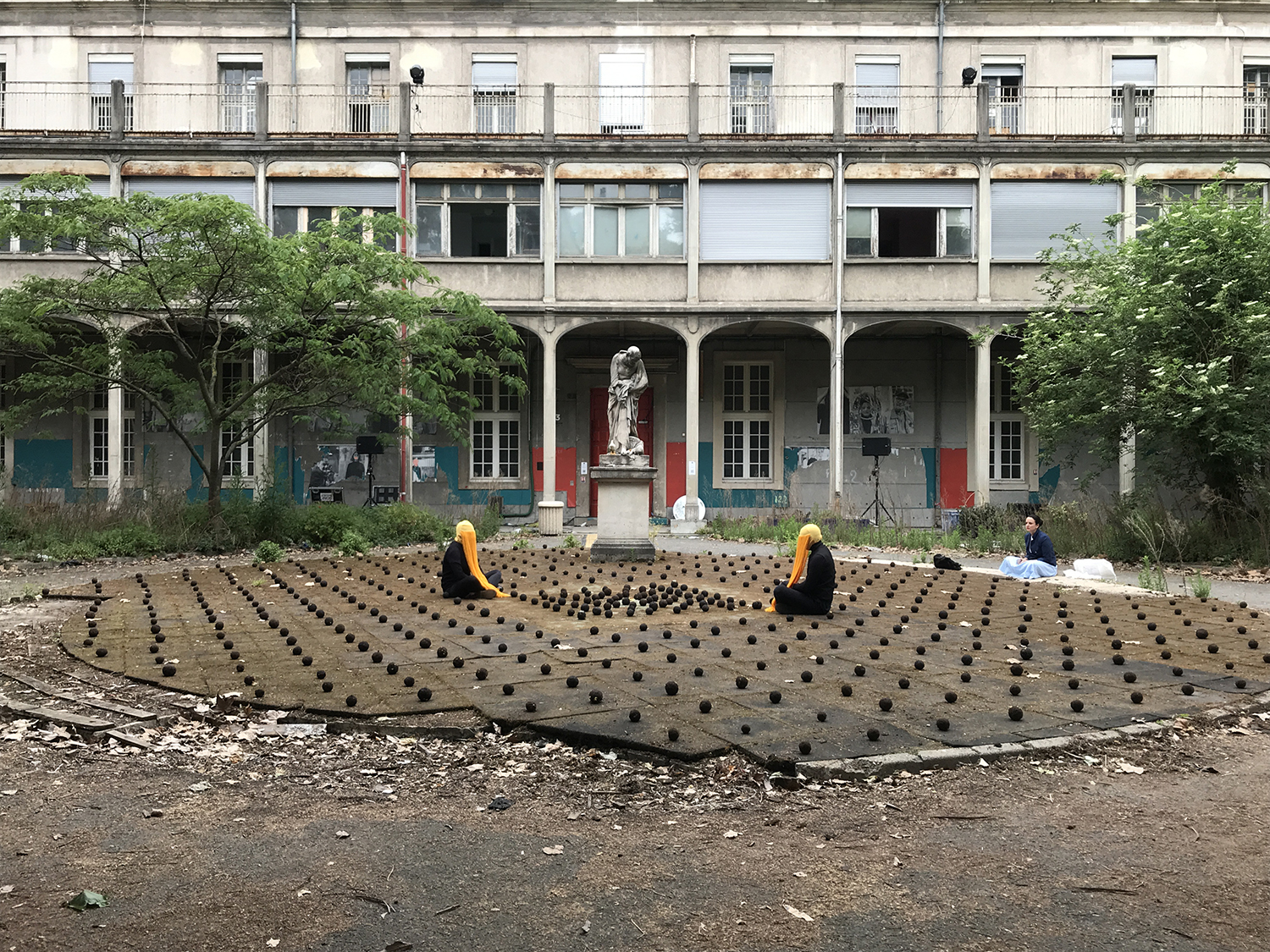
Further Reflections
The problem is less about giving subject rights to forests and more about imagining legislation in which we become something-more-than-subjects in our relation with that something-more-than-forests. Emancipation lies in ceasing to be subjects to become something other than ourselves. For us, there is a relevant difference between how automation thinks of forests, to how forests think of automation.
